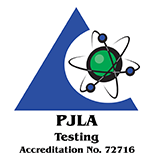Iodine Content of
Pet Food and
Infant Formula
by ICP-MS

MBL can determine the concentration of mitragynine and 7-Hydroxymitragynine in your kratom samples. Both alkaloids are responsible for the painkilling and opiod withdraw relieving effects of the Mitragyna speciosa tree.
Mitragyna speciosa, otherwise known as kratom, is a tropical evergreen tree in the coffee family native to Southeast Asia. It is indigenous to Thailand, Indonesia, Malaysia, Myanmar, and Papua New Guinea.
Although human exposure to toxic heavy metals persists globally, the prevalence of heavy metal pollution is most notable in low and middle-income countries.
It is especially important to assess the heavy metals levels in kratom imported from such countries.
Salmonella is an important risk to kratom users. As of May 24, 2018, an outbreak of 199 cases of salmonellosis in which kratom was identified of the likely source caused a recall of the product in 41 states.
Kratom is high risk for carrying Salmonella, possibly due handling practices of the countries where it is grown and processed.
Although Salmonella requires a fairly high water activity to grow, the bacteria can survive quite well in dried products, including kratom leaves, pills, capsules, and powders. In some individuals, it only takes 1 cell of Salmonella to cause disease.
MBL uses Polymerase Chain Reaction (PCR) to detect Salmonella in kratom samples. This technology can detect as little as 1 Salmonella cell in a sample.
References:
CDC Multistrain Outbreak of Salmonella Infections Linked to Kratom
The Colorado Retail Food Establishment Rules and Regulations (6 CCR 1010-2) establishes criteria by which to classify products made for human consumption as a Potentially Hazardous Food (PHF) or a non-Potentially Hazardous Food (non-PHF). Accordingly, the water activity (aW) of kratom infused products, such as baked goods, intended for oral consumption must be below 0.88; otherwise the product requires time/temperature control for safety to limit pathogen growth or toxin formation.
Furthermore, even though bacterial pathogens cannot grow at aW below 0.85, many yeasts and molds can, the latter of which can spoil product and sometimes produce mycotoxins.
References:
pH & aW: Defining Potentially Hazardous Food
Water Activity via AquaLab by Decagon
Colorado Retail Food Establishment Rules and Regulations (6 CCR 1010-2)
Exogenous hyperthyroidism is the term used to describe hyperthyroidism caused by ingestion of excessive amounts of thyroid hormone.
Mitragyna speciosa, otherwise known as kratom, is a tropical evergreen tree in the coffee family native to Southeast Asia. It is indigenous to Thailand, Indonesia, Malaysia, Myanmar, and Papua New Guinea.
Although human exposure to toxic heavy metals persists globally, the prevalence of heavy metal pollution is most notable in low and middle-income countries.
It is especially important to assess the heavy metals levels in kratom imported from such countries.
Salmonella is an important risk to kratom users. As of May 24, 2018, an outbreak of 199 cases of salmonellosis in which kratom was identified of the likely source caused a recall of the product in 41 states.
Kratom is high risk for carrying Salmonella, possibly due handling practices of the countries where it is grown and processed.
Although Salmonella requires a fairly high water activity to grow, the bacteria can survive quite well in dried products, including kratom leaves, pills, capsules, and powders. In some individuals, it only takes 1 cell of Salmonella to cause disease.
MBL uses Polymerase Chain Reaction (PCR) to detect Salmonella in kratom samples. This technology can detect as little as 1 Salmonella cell in a sample.
References:
CDC Multistrain Outbreak of Salmonella Infections Linked to Kratom
The Colorado Retail Food Establishment Rules and Regulations (6 CCR 1010-2) establishes criteria by which to classify products made for human consumption as a Potentially Hazardous Food (PHF) or a non-Potentially Hazardous Food (non-PHF). Accordingly, the water activity (aW) of kratom infused products, such as baked goods, intended for oral consumption must be below 0.88; otherwise the product requires time/temperature control for safety to limit pathogen growth or toxin formation.
Furthermore, even though bacterial pathogens cannot grow at aW below 0.85, many yeasts and molds can, the latter of which can spoil product and sometimes produce mycotoxins.
References:
pH & aW: Defining Potentially Hazardous Food
Water Activity via AquaLab by Decagon
Colorado Retail Food Establishment Rules and Regulations (6 CCR 1010-2)
MBL can determine the concentration of mitragynine and 7-Hydroxymitragynine in your kratom samples. Both alkaloids are responsible for the painkilling and opiod withdraw relieving effects of the Mitragyna speciosa tree.
Mitragyna speciosa, otherwise known as kratom, is a tropical evergreen tree in the coffee family native to Southeast Asia. It is indigenous to Thailand, Indonesia, Malaysia, Myanmar, and Papua New Guinea.
Although human exposure to toxic heavy metals persists globally, the prevalence of heavy metal pollution is most notable in low and middle-income countries.
It is especially important to assess the heavy metals levels in kratom imported from such countries.
Salmonella is an important risk to kratom users. As of May 24, 2018, an outbreak of 199 cases of salmonellosis in which kratom was identified of the likely source caused a recall of the product in 41 states.
Kratom is high risk for carrying Salmonella, possibly due handling practices of the countries where it is grown and processed.
Although Salmonella requires a fairly high water activity to grow, the bacteria can survive quite well in dried products, including kratom leaves, pills, capsules, and powders. In some individuals, it only takes 1 cell of Salmonella to cause disease.
MBL uses Polymerase Chain Reaction (PCR) to detect Salmonella in kratom samples. This technology can detect as little as 1 Salmonella cell in a sample.
References:
CDC Multistrain Outbreak of Salmonella Infections Linked to Kratom
The Colorado Retail Food Establishment Rules and Regulations (6 CCR 1010-2) establishes criteria by which to classify products made for human consumption as a Potentially Hazardous Food (PHF) or a non-Potentially Hazardous Food (non-PHF). Accordingly, the water activity (aW) of kratom infused products, such as baked goods, intended for oral consumption must be below 0.88; otherwise the product requires time/temperature control for safety to limit pathogen growth or toxin formation.
Furthermore, even though bacterial pathogens cannot grow at aW below 0.85, many yeasts and molds can, the latter of which can spoil product and sometimes produce mycotoxins.
References:
pH & aW: Defining Potentially Hazardous Food
Water Activity via AquaLab by Decagon
Colorado Retail Food Establishment Rules and Regulations (6 CCR 1010-2)

